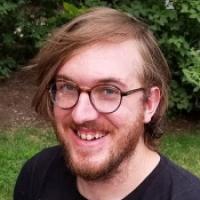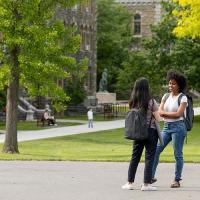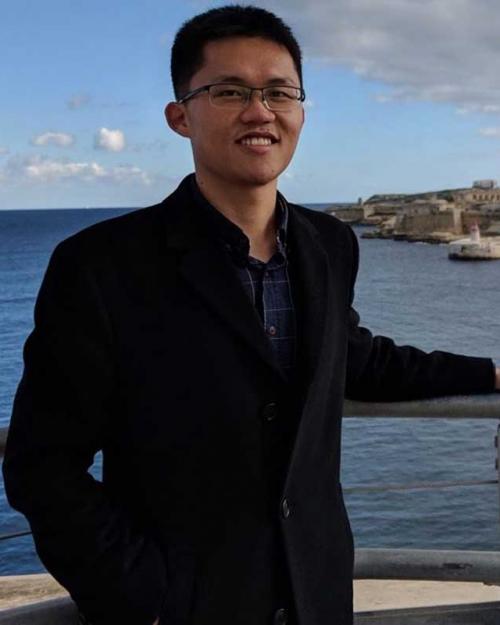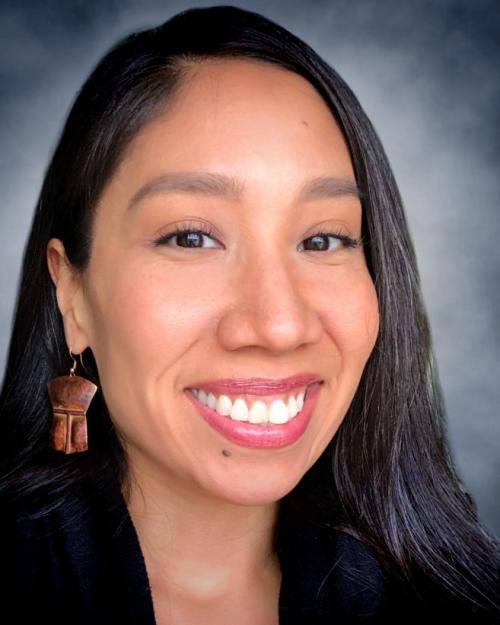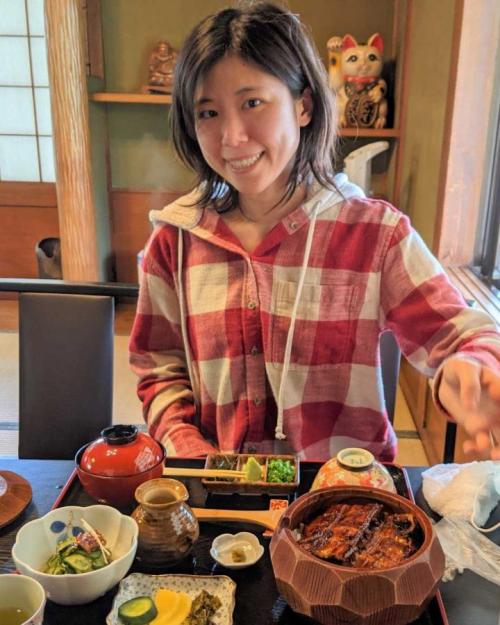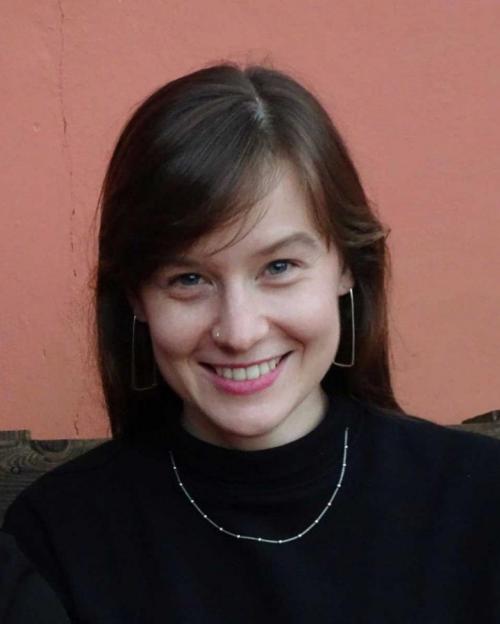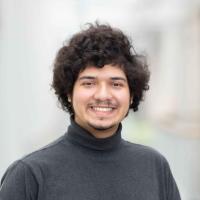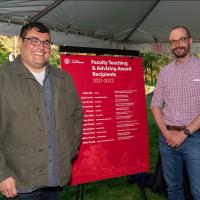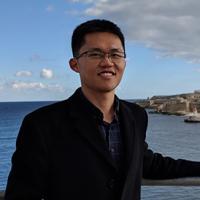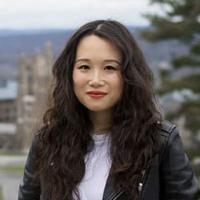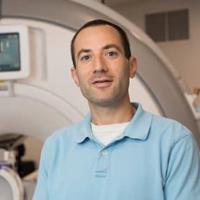
|
|
view online
|

|
|

|

|
Giving Day 2022!
Dear Friends of Cornell Linguistics,
Since the last time I wrote a Giving Day letter (in 2018) we have all gone through some things. No need for me to recount them for you. But the Cornell Linguistics Department remains strong. We continue to educate our outstanding students, do cutting-edge research, and contribute to the larger Cornell community.
This year we welcomed a new colleague, Amalia Skilton, who won the Klarman fellowship and has joined us as a post-doc. Amalia is a field linguist and a pragmaticist who works especially on two languages of northwestern Amazonia Ticuna (isolate) and Máíhɨ̃ki (Tukanoan). Amalia will be teaching a new advanced field methods seminar next fall. At the same time we said goodbye to Jon Ander Mendia, a Mellon post-doc who will now be moving on to the Universitat Autònoma de Barcelona.
The ASL program continues to grow under the dynamic leadership of Brenda Schertz. Brenda was joined this year by Nora Owen and Matilda Prestano and we will be offering 11 ASL courses next fall!
Our colleague, the semanticist Dorit Abusch, has created a new subfield of linguistics, which she calls Superlinguistics. Superlinguistics applies the tools of formal semantics and pragmatics to nonlinguistic material such as the images found in comic books, movies, and paintings. She’s offering a course on Superlinguistics for the first time this semester. It’s a great example of a linguist sharing hard-won insights with scholars of other fields and it has the potential to revolutionize the discussion of images in philosophy, art history and comparative literature.
Our undergraduate students continue to amaze. This year we will graduate a record-high 19 majors who are going off into the real world—or to graduate school in Linguistics—with the deep toolbox that an education in linguistics provides. They can morphologize, they can draw trees, they can write programs, they can comment on socially conditioned variation, they can read a spectrogram, they can spot a bogus etymology, but, like all linguists, they can’t tell you what a word is. The graduate students are the beating heart of our intellectual community with their curiosity, innovation, and enthusiasm. Most of our recent Ph.D.s have gone off to prestigious post-docs or faculty positions. We miss them, but there are new graduate students with new passions.
How privileged we are to work and study in this collegial environment with such talented students, such dedicated scholars and such talented staff.
This year we have decided to focus our Giving Day request on supporting undergraduate and graduate research. We would like to make the undergrad linguistic experience even better by providing more support for undergraduate research. On the graduate side, we hope to be able to increase our support for conference presentations. Our goal is to raise $10,000 this year. Any amount you can give will be gratefully received. Even a small amount can make a big difference.
Linguistically yours,
Michael Weiss
Professor and Chair
Department of Linguistics
Give to Linguistics on Cornell Giving Day!
#CornellGivingDay #CornellCAS
|

|
Welcoming New Faculty
We welcomed two new people to the department this year:
|

|
Department Happenings
- We are pleased to announce the reappointments of Brenda Schertz, Nora Owen, and Matilda Prestano, our ASL instructors.
- Sam Tilsen and Helena Aparicio will be supervising a Nexus Scholar this summer on a project using eye-tracking to investigate how speakers plan and produce sentences when describing dynamic visual scenes
- Michael Weiss completed a manuscript for the first ever pedagogical grammar of Tocharian B, an Indo-European language attested in Medieval documents from what is now Xinjiang. The book will come out this summer.
- The CNY Humanities Corridor Group Sign Language and Deaf Culture, co-organized by Molly Diesing, Brenda Schertz, and Corrine Occhino (Syracuse University) held meetings and sponsored a guest speaker (Sandra Wood).
- Simon Roessig, PhD. Linguistics, University of Cologne, was awarded a two-year fellowship from the German Research Foundation to work as a postdoctoral fellow with Sam Tilsen on a project investigating speech articulation and prosody.
- Joseph Rhyne and John Starr, graduate students, were each awarded $1000 by the graduate research funding initiative through the Cornell University Cognitive Science Program.
|

|
Cornell Linguistics in the News
- Klarman postdoctoral fellow Amalia Skilton will travel to Peru in April 2022 to continue her study of joint attention behaviors in the Amazon basin.
-
Assistant professor Marten van Schijndel, along with Beth Lyons (Cornell Law School) and Gilly Leshed (Cornell Ann S. Bowers College of Computing and Information Science), developed the xenophobia meter project to track anti-immigrant hate speech on social media.
-
Visiting lecturer Jessica Martin contributed to Kurt Jordan's new book on Gayogo̱hó:nǫ’ history.
-
A new course on Superlinguistics was offered by Professor Dorit Abusch in Spring 2022. Super-linguistics is a subfield of linguistics that applies techniques used for analyzing natural language to non-linguistic materials.
|

|
Faculty Publications
-
Dorit Abusch and Mats Rooth, 2022. Temporal and intensional pictorial conflation. Proceedings of Sinn und Bedeutung 26.
-
Helena Aparicio, Curtis Chen, Roger Levy, Elizabeth Coppock, 2022. Granularity in the semantics of comparison. Proceedings of SALT 31.
-
Abigail Cohn and Margaret E.L. Renwick, 2021. Embracing multidimensionality in phonological analysis. The Linguistic Review 38.1.
-
Miloje Despic (in press). Size of the moving element matters: Left branch extraction is not scattered deletion. In Zheng Shen and Sabine Laszakovits (eds.), The Size of Things II: Movement, Features, and Interpretation. (Open Generative Syntax). Berlin: Language Science Press.
-
Molly Diesing and Beatrice Santorini, 2022. On the symmetry of Yiddish V2 and some of its consequences for extraction. Journal of Germanic Linguistics 34.2.
-
Pádraic Moran and John Whitman, 2022. Glossing and reading in Western Europe and East Asia: a comparative case study. Speculum 97.1.
-
Sarah Murray, 2021. Evidentiality, modality, and speech acts. Annual Review of Linguistics 7.
-
Alan Nussbaum, 2021. Spēs Exploration: The derivational history of Latin spēs/spērēs ‘hope’, spērāre ‘to hope’. In Matteo Tarsi (ed.), Studies in General and Historical Linguistics Offered to Jón Axel Harđarson on the Occasion of his 65th Birthday. Innsbruck: Institut für Sprachwissenschaft der Universität Innsbruck.
-
Sam Tilsen, 2022. Relaxation, percolation, and non-spontaneous fluctuation of linguistic behavior in a quasi-isolated system. Frontiers in Physics, Social Physics.
-
Marten van Schijndel and Tal Linzen, 2021. Single-stage prediction models do not explain the magnitude of syntactic disambiguation difficulty. Cognitive Science 45.6.
-
Michael Weiss, 2021. Pig, cake, and sun: observations on the iúvila inscriptions. In Satoko Hisatsugi (ed.), Die Italischen Sprachen Neue Linguistische und Philologische Aspekte. Hamburg: Baar Verlag.
-
Draga Zec and Elizabeth Zsiga (in press). Tone and stress as agents of cross-dialectal variation: the case of Serbian. In Haruo Kubozono, Junko Ito & Armin Mester (eds.), Prosody and Prosodic Interfaces. Oxford: Oxford University Press.
|
|

|
|
|
203 Morrill Hall
Ithaca, NY 14853
United States
Unsubscribe
|
|

|
|
|
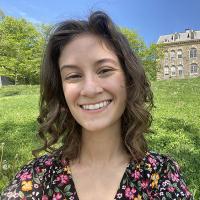
 Department Homepage
The College of Arts & Sciences
Department Homepage
The College of Arts & Sciences


